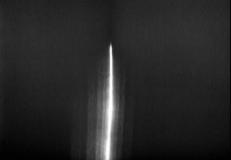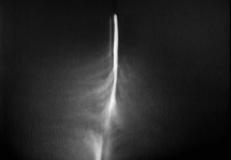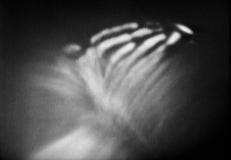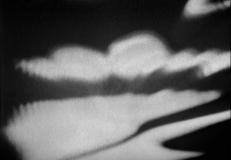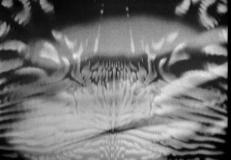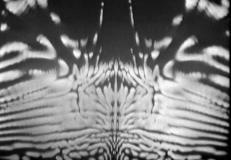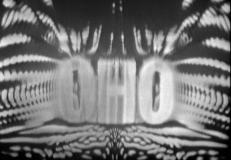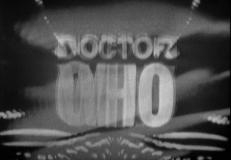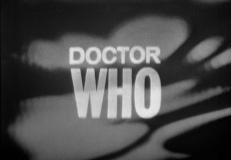An Unearthly Series - The Origins of a TV Legend
Tuesday, 20 August 2013 - Reported by Marcus

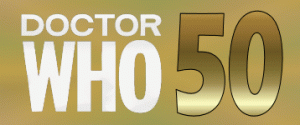 The eighteenth in our series of features telling the story of the creation of Doctor Who, and the people who made it happen.
The eighteenth in our series of features telling the story of the creation of Doctor Who, and the people who made it happen.Production on the new series was progressing. The main cast were under contract and being measured for costumes and make-up.
It was on Tuesday 20th August 1963 - exactly 50 years ago today - that Doctor Who had its first studio session.
The place was Stage 3A of the BBC's television studios in Ealing, and the event was testing for what would become the iconic Doctor Who title sequence. The designer assigned was Bernard Lodge and the inspiration for the design came from a piece of 35mm film obtained by Verity Lambert. The film had been created for the children's production of Tobias and the Angel, made in 1960, and featured a howl-round effect that impressed Lambert.
The use of howl-round as an effect had been pioneered in the late Fifties by Norman Taylor, a BBC technical operations manager on Crew 9 based at Lime Grove in London. He discovered, while experimenting with a camera looking at a monitor showing its own picture, the effect of diminishing images into limbo.
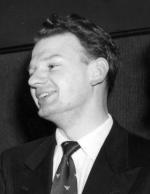 Norman Taylor
Norman TaylorWe sometimes were allocated to two minor programmes in the same studio on the same day. This often resulted in a gap of activity between the transmission of the first and the start of rehearsals of the second.
On one of these days I used the gap to experiment with a camera looking at a monitor displaying its own picture. I think it was either Studio H or G Lime Grove. I got the usual effect of diminishing images of the monitor disappearing into limbo, when suddenly some stray light hit the monitor screen and the whole picture went mobile with swirling patterns of black and white. Later I repeated the experiment but fed a black-and-white caption mixed with the camera output to the monitor, and very soon got the Doctor Who effect.
I reported this to Ben Palmer the Investigations Engineer, who did some further work on it, and he mentions it in his book. I submitted it as a Technical Suggestion which was forwarded to the Specialist Engineering Departments. They obviously had no idea of what I was talking about and rejected it. I then demonstrated it to [broadcaster and future BBC1 Controller] Huw Wheldon and others who were impressed.
In 2011, Palmer recalled how Taylor had brought the effect to him in his role as an Investigations Engineer, responsible for developing new operational techniques:
Ben Palmer
Norman told me of the interesting effect and thought I might like to look into it further. I conducted several tests and discovered an astonishing range of feedback effects which were visually stunning. By deliberately moving the camera slightly and changing the operation of the camera tube – reversing line scan, reversing field scan, rotating the picture, phase reversing the signal – one achieved multiple patterns – all quite abstract in nature. Using an image, such as a human face, to initiate the feedback made the face distend and break up in a very strange way. Although not involved in the first use of this technique for Doctor Who, I was fully involved in generating the titles for several subsequent series, when the role holder changed. Because of this, I became associated with the feedback effect as well as with other special effects.
I demonstrated this effect to BBC production staff but they could find no use for it except for a brief scene in a Rudolph Cartier play – Tobias and the Angel.
It was this film sequence for Tobias and the Angel that had caught the attention of Lambert and which she showed to Lodge as the type of effect she would like for the opening of her new drama series. The sequence impressed Lodge and he suggested feeding the letters from the Doctor Who title into the sequence.Norman told me of the interesting effect and thought I might like to look into it further. I conducted several tests and discovered an astonishing range of feedback effects which were visually stunning. By deliberately moving the camera slightly and changing the operation of the camera tube – reversing line scan, reversing field scan, rotating the picture, phase reversing the signal – one achieved multiple patterns – all quite abstract in nature. Using an image, such as a human face, to initiate the feedback made the face distend and break up in a very strange way. Although not involved in the first use of this technique for Doctor Who, I was fully involved in generating the titles for several subsequent series, when the role holder changed. Because of this, I became associated with the feedback effect as well as with other special effects.
I demonstrated this effect to BBC production staff but they could find no use for it except for a brief scene in a Rudolph Cartier play – Tobias and the Angel.
 Bernard Lodge
Bernard LodgeQuite a lot of howl-around footage already existed as a technical guy named Ben Palmer had been experimenting. Although the pattern generation was a purely electronic process it had been recorded on film, They had yards and yards of this experimental footage and I was asked to go down to Ealing and watch through it all with Verity Lambert.
When I saw the footage I was amazed. I suggested that if the facility for producing the effect could be arranged, we ought to try entering the basic lettering into the howl round. What I didn't realise was that the simple shape of the words, the two lines of fairly symmetrical type, would generate its own feedback pattern. When we introduced the title, the effect was sensational.
I didn’t realise that it would involve a TV studio for half a day. Verity had to plead for more money. On the day there were about five technical men, with Ben Palmer in charge, and the effect was created again – the camera looking at the monitor to which it sent the image. When we introduced the title, the effect was sensational. We used 35mm film recording, and amassed miles of film. Verity asked me to edit the sequence, which I did.
Clive South, who was part of the technical team, recalls that TC3 was used to create the effect which was recorded on to film at Lime Grove. He said:
Clive South
I was one of the three-man engineering team in the VAR (Vision Apparatus Room) so we set up a spare camera channel to look at a preview monitor switched to its own video output. Next was the really high-tech operation – a candle was lit and quickly flashed in front of the camera, and hey presto! A video howl-round was created.
Hugh Sheppard, who was on camera for the session, recalls Taylor lighting matches to trigger the howl-round. I was one of the three-man engineering team in the VAR (Vision Apparatus Room) so we set up a spare camera channel to look at a preview monitor switched to its own video output. Next was the really high-tech operation – a candle was lit and quickly flashed in front of the camera, and hey presto! A video howl-round was created.
Geoff Higgs, who was working in videotape in 1963, talked about some of the complications in recording the sequence:
Geoff Higgs
I remember that the result was fed through the device in standards converters (third or fifth floor, central wedge, TVC) that split the picture vertically down the middle and made the left and right halves of the raster mirror-imaged. I definitely recall titles that looked like that.
Lodge used just one part of the old Tobias and the Angel footage: the very start, the opening line that comes up and then breaks away. Everything else was new. I remember that the result was fed through the device in standards converters (third or fifth floor, central wedge, TVC) that split the picture vertically down the middle and made the left and right halves of the raster mirror-imaged. I definitely recall titles that looked like that.
Complete with the Ron Grainer music, realised by Delia Derbyshire and Dick Mills, the opening sequence would become one of the most memorable and inspired in the history of British television.


SOURCES: BBC Prospero 2011; The Handbook: The First Doctor – The William Hartnell Years: 1963-1966, David J Howe, Mark Stammers, Stephen James Walker (Doctor Who Books, 1994); Ben at the Beeb, Ben Palmer, Valarie Taylor
